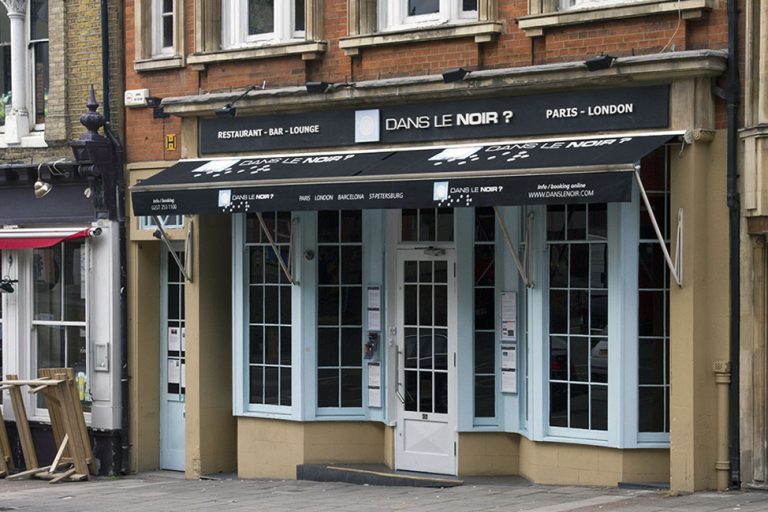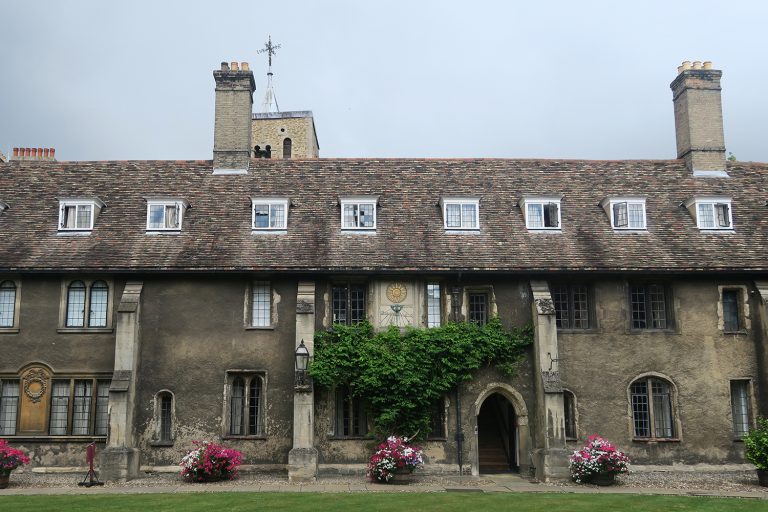How to travel responsibly between London & Paris
London and Paris. They’re two of Europe’s star cities. Keen to visit both on the same trip? Or curious to discover a more unique way of travelling between the two, other than flying? Read on to find out how to travel between London and Paris, responsibly.

When you think of European capital cities, London and Paris are usually the first two to come to mind.
They’re beautiful and bustling, packed with history and plenty of interesting things to do. So, it’s no wonder that many first time (or subsequent) visitors to Europe want to tick these two vibrant cities off their list.
Plus, they’re a mere 344 kilometres apart (214 miles). The Channel Tunnel (aka the Chunnel), which runs between the two under, you guessed it, the English Channel, makes it easy to travel between the two. And opens up options other than flying.
Read on to discover the best ways to get between London and Paris, particularly if you’re wanting the journey to provide as much delight as the destination.

How to travel between London and Paris
First things first. Remember that when you are travelling from London to Paris, you are crossing an international border. You’re leaving the United Kingdom, which has decidedly split itself from the continent by ideology now as much as geography, to a Schengen Area.
This means you’ll have to go through border security and customs. Don’t forget your travel documents and passport!
What’s the easiest way of getting from London to Paris?
Personally, I reckon the best way to travel between London and Paris is via train – the Eurostar.
This high-speed train connects the United Kingdom with France, Belgium and the Netherlands.
There’s a few reasons why the train outweighs flying or any other method of travel, which I’ll outline below.

Travelling between London and Paris by train
Travel time between London and Paris by train: at least 2 hours, 16 minutes
Sustainability rating: High
The Eurostar is probably the easiest way to travel from London to Paris. It takes you direct from London’s St. Pancras Station to Paris Gare du Nord at a wonderfully fast speed.
All you need to do is book your ticket, get to the station, settle on the train with a good book or podcast, and snacks (mandatory). Then – relax.
The journey will take you through the Channel Tunnel, or Chunnel for brevity. We take this tunnel largely for granted now, but it’s only been around since 1994. Being 50km (31 miles) in length, it’s the longest continuous underwater tunnel in the world. Very cool.
Along with Paris, the Eurostar can take you to Disneyland Paris, Brussels, and Amsterdam.
Benefits of travelling to Paris from London via train
A neat feature that is a major props for train travel. Despite the fact you’re travelling between countries, you’re not subjected to the same volume limits for liquids as you are when flying. So on a quick trip between London and Paris you can bring full bottles of shampoo, facial cleanser… even bubbly. Hurrah!
There’s three types of tickets – Standard Class, Standard Premier and Business Premier. Each tier comes with different perks, which has access to food services and luggage allowance (plus comfort levels for your seat). Each ticket allows at least two pieces of luggage (Business Premier will grant you up to three).
How much does the train between London and Paris cost?
Like airlines, ticket prices for the Eurostar tend to fluctuate. And as with flights, it pays to book in advance.
A cheaper ticket can cost less than £40, one-way. Business class can be up to £300 one way, But hey – you get a decent feed and champagne.
Explore fares and find more information on the Eurostar London to Paris train.
How far in advance can you book your train ticket?
Know what dates you’ll be travelling between London and Paris way ahead of time? Excellent. You can book your ticket up to 180 days in advance.
Conclusion: Travelling by train from London to Paris is easy and stress-free. If you book your ticket enough in advance, you’ll be in for a pretty sweet deal.

Travelling between London and Paris by bus
Travel time between London and Paris by bus: around 9 hours, 45 mins. The fastest bus route is 9 hours, 30 mins and the slowest over 10 hours.
Sustainability rating: Medium-high
Travelling by bus from London to Paris is generally the least expensive route.
If you book your ticket in advance and avoid rush hour, you can usually nail a pretty cheap fare.
It’s also probably the most time-consuming way to travel between the two cities, so if you need to get to your destination quickly, you should discount this method of transport.
However, if you’re on a budget and can sleep just about anywhere, it may be a good option for you.
Plus, it’s no fuss. You get on the bus, you stay on the bus, you get off the bus and you’re in a new country. Easy.
How much does the bus from London to Paris cost?
Prices fluctuate but are generally between £27 to £49 per person.
Which bus companies travel between London and Paris?
Two of the main companies servicing this route are Flixbus and BlaBlaCar Bus.
Buses tend to leave from the Victoria Coach Station in London, taking you to the Quai de Bercy (Bercy Seine) in Paris. You can also catch a bus in London to Paris airports and Disneyland Paris.
How to buy a bus ticket
You can purchase tickets directly from the bus companies, or compare routes through a site like Omio.
How many buses leave London for Paris daily?
At least one bus travels direct from London to Paris a day.
If you’re game, you can jump on a night bus, which will see you wind through the countryside, through the Chunnel and into Paris by very early morning.
Look, it’s okay if you’re on a budget. But I wouldn’t say it’s pleasant, or that you’re going to get the best sleep of your night. Definitely bring ear plugs, an eye mask and a decent neck pillow, and arrive early so you can get the best seat.
And don’t do what I did and eat something rank beforehand, giving you food poisoning for the first two days of your long weekend in Paris. Completely inadvisable.
Conclusion: Travelling by bus from London to Paris (or vice versa) is a good option if you’re looking to save a few euros or quid and not have too many to any transfers on your journey. However, it’s a lengthy trip and doesn’t bring with it the same comforts as train travel.

Flying between London and Paris
Travel time between London and Paris by plane: around 1 hour, 15 mins.
Sustainability rating: Low
I’m including this as an option as it is popular and can be inexpensive. But is it the best way to get from London to Paris?
Not really. Here’s why.
When you look at the flight time, it does appear that flying between London and Paris is the quickest option.
But. There are other factors to consider.
For one thing, you need to get to the airport, which can be a mission in itself.
London has six major airports:
- London City
- London Gatwick
- London Heathrow
- London Luton
- London Stansted
- London Southend.
The first three are fairly easy to get to, the latter three not so much. And you’ll have to navigate your way to Paris’s city centre (depending on where you’re staying) from Charles de Gaulle, Orly, or Paris Beauvais airport.
Plus, if you’re flying, you have to go through the bother of going through customs, going through security, waiting around around for your flight.
And remember, flying is generally not the most responsible way to travel and when you’re doing it for such a short flight, it can feel a bit icky.
This is why I recommend train travel over flying. It’s just a nicer, more wholesome experience!
Which airlines fly from London to Paris?
Oh, the usual suspects. Easyjet, Vueling, British Airways and Air France offer direct flights.
You can opt for a flight with a layover, but this will obviously extend your travel time.
How much does it cost to fly from London to Paris?
As with any airfare, it varies based on time of year, availability and sales.
A ticket will generally cost less than £100. I’ve seen direct tickets from London to nearby destinations for as low as £9 (pre COVID-19). This isn’t counting extra costs such as baggage and seat selection, so be sure to take this into account.
Conclusion: flying from London to Paris is generally inexpensive and can be quick, but consider the added factors getting both to and through the airport, to board your flight. Is it the nicest way to travel? Probably not.

Taking the ferry between London and Paris
Travel time between London and Paris by ferry: 6 to 8 hours, inclusive of getting to the ferry. The ferry ride itself is around 90 minutes on the quickest route.
Sustainability rating: Medium-high
If you’re looking for a really fun way to get from London to Paris… well, you’ve found it.
Taking the ferry across the Chunnel may be the highlight of your trip. Not only is it unique, but you’ll have grand views of the fabled White Cliffs of Dover leaving the UK and the Cap Blanc-Nez as you arrive in France, if you go the traditional Dover to Calais route.
You can’t go direct from London to Paris by ferry. Man, it would be cool if you could (perhaps improvements on the old hovercrafts before they were retired could have led to this sci-fi reality…?). Sadly, you have to navigate to a ferry port to make the journey across.
Fortunately, there are quite a few options:
- Dover-Calais – the shortest sea crossing
- Newhaven-Dieppe – has a slightly longer sea-crossing
- Portsmouth to Caen – an overnight ‘sleeper’ option
- Portsmouth to St Malo – as above but more luxurious.
Getting to the ferry from London or Paris
The easiest way to get from London to Paris by ferry, is to go train-ferry-train. A high-speed train will take you from St. Pancras Station in London to Dover in just over an hour. You can also get trains from Charing Cross and Victoria Station. They take a little longer as the chug along a wee bit slower.
Noting Dover Priory Station is about a 15 minute drive or 30 minute walk from the passenger ferry terminal. Grab a taxi, or stretch your legs as you take in that fresh, salty air.
Arriving in Calais, jump on the TGV high-speed train to get to Paris. Alternatively, you can rent a car or take a bus, depending on your budget and travel plans.
You could also cycle down to Dover from London, depending on your fitness level and, erm, overall enthusiasm I suppose. The ferry is also a good option for those doing extended walks through the UK and France and need a way to travel overland (or water, as it were) between the two.
Benefits of catching the ferry from London to Paris
You can take your pet! Most ferries allow your furry friend to be brought onboard if you’re travelling in a vehicle. They need to stay in the vehicle, although you’ll find special pet sections on some ferries, for them to stretch their legs.
Make sure you check the guidelines before doing this and have the proper documentation (and vaccinations for your pet). Don’t just shove Fido in your car and head off for the ferry to France.
The ferry is an ideal mode of transport for foot passengers and cyclists, so perfect if you’re cycling around France or the UK.
As with the train, there’s a bar and restaurant onboard most ferries.
Also, you don’t have to go through the Chunnel, which is great if you suffer from claustrophobia.
While the Dover to Calais is the fastest and most efficient route, consider taking the overnight sleeper, if you get the chance. I’ve done this from Melbourne to Tasmania onboard the Spirit of Tasmania. I had a great time and it’s one of my favourite travel memories.
Find out more about travelling from London to Paris via ferry.
How many ferries travel between Dover and Calais a day?
Approximately 39 ferries depart from Calais to Dover every day, from Monday to Sunday.
The route is serviced by DFDS Seaways, who run around 15 services a day on this line. P&O ferries depart around 24 times a day.
How much does it cost?
It can cost as little as £29 for walk-on travellers to catch the ferry from Dover to Calais.
Obviously this doesn’t include factors such as getting to the ferry terminal and transferring into Paris from Calais. And bringing your car or a pet can lead to an increase in cost.
If you’re super into ferry trips, check out the options from the town of Poole in Dorset, one of which is a route to the biggest of the Channel Islands, Jersey!
Conclusion: If you don’t mind travelling to the ports to and from the respective big cities, the ferry is a really fun way of getting across the Channel. If you’ve got the time, you might want to consider spending some time in the ferry terminal towns as well, to make the most out of your trip.

Driving from London to Paris
Travel time between London and Paris by car: around 6 hours.
Sustainability rating: Medium-high
If you have car (and feel comfortable driving on both the left and right hand side of the road) then driving from London to Paris might be the best option for you.
It’s certainly the most flexible. You don’t have to worry about baggage restrictions and you can take your pet. Again, check requirements before you go.
It’s not possible to actually drive through the Chunnel. You’ll need to take the Eurotunnel or as aforementioned, a ferry.
The Eurotunnel is faster but far more dull. Plonk your can onto the ferry for the scenic views and access to the restaurant.
Driving requirements
It’s not exactly as simple as hop in your car and go.
France and the UK have different regulations. Of course, knowing the basic traffic laws is helpful. But there’s other things to take into consideration.
When driving a UK car in the EU, you’ll need:
- a valid driver’s licence
- vehicle registration certificate (V5 document)
- passport
- proof of insurance
- UK sticker on your car
- warning triangle and reflective safety vests.
Some of these requirements will also be valid if you’re bringing a car from France to the UK.
Taking a car through the Chunnel versus the ferry
We’ve established that taking the ferry is generally going to be more fun.
However, I suppose I should point out that the Chunnel is much quicker, coming in at around a 35 minute journey, as opposed to the gentle 90 minute ferry ride.
Cost of driving from London to Paris
The price for the Eurotunnel Le Shuttle will depend on the size of your vehicle (motorbikes will obviously be cheaper than motorhomes) and any additions like caravans. You can check the prices online while you’re planning your trip.
Fuel is also a consideration. With petrol prices at an all-time high at the time of writing (2022), this may seriously increase the cost of your journey. Electric or hybrid cars can be powered at electric charging stations at both the UK and France Eurotunnel Le Shuttle terminals.
A rental car may also occur additional charges. Plus, many rental car agencies do not allow their cars to be driven from the UK to France, or vice versa.
Generally, it makes more sense to take your own car from the UK to Europe via the Chunnel or ferry. It’s more cost efficient in the long run.
Conclusion: Driving from London to Paris gives you flexibility and could be a fun addition to a lengthier road trip. But, make sure you read up on the necessary regulations before you head off.

What is the best way to get from London to Paris?
If you’re short on time consider the train.
After a scenic, more relaxed journey? Take your car, bike or just your fine self on the ferry.
Wanting to travel on an epic road trip from London into Europe, via Paris? Navigate to France via your car, motorbike or campervan.
Need a place to stay for your trip?
Looking for accommodation in London? The Premier Inn Tower Bridge is a good option for budget travellers, who still want a bit of space. It’s a bit pricier, but I always stay at Grange City Hotel, whenever I’m in the city.
I hope this post has helped you determine the best way of travelling from London to Paris.
Have you travelled from London to Paris any way other than flying? Feel free to share any of your own tips or advice on doing this journey. And check out more sustainable travel tips.
You also may want to learn how to integrate the 12 permaculture principles into your travels.
Please note: This post is written in conjunction with Omio, however all views remain my own.







